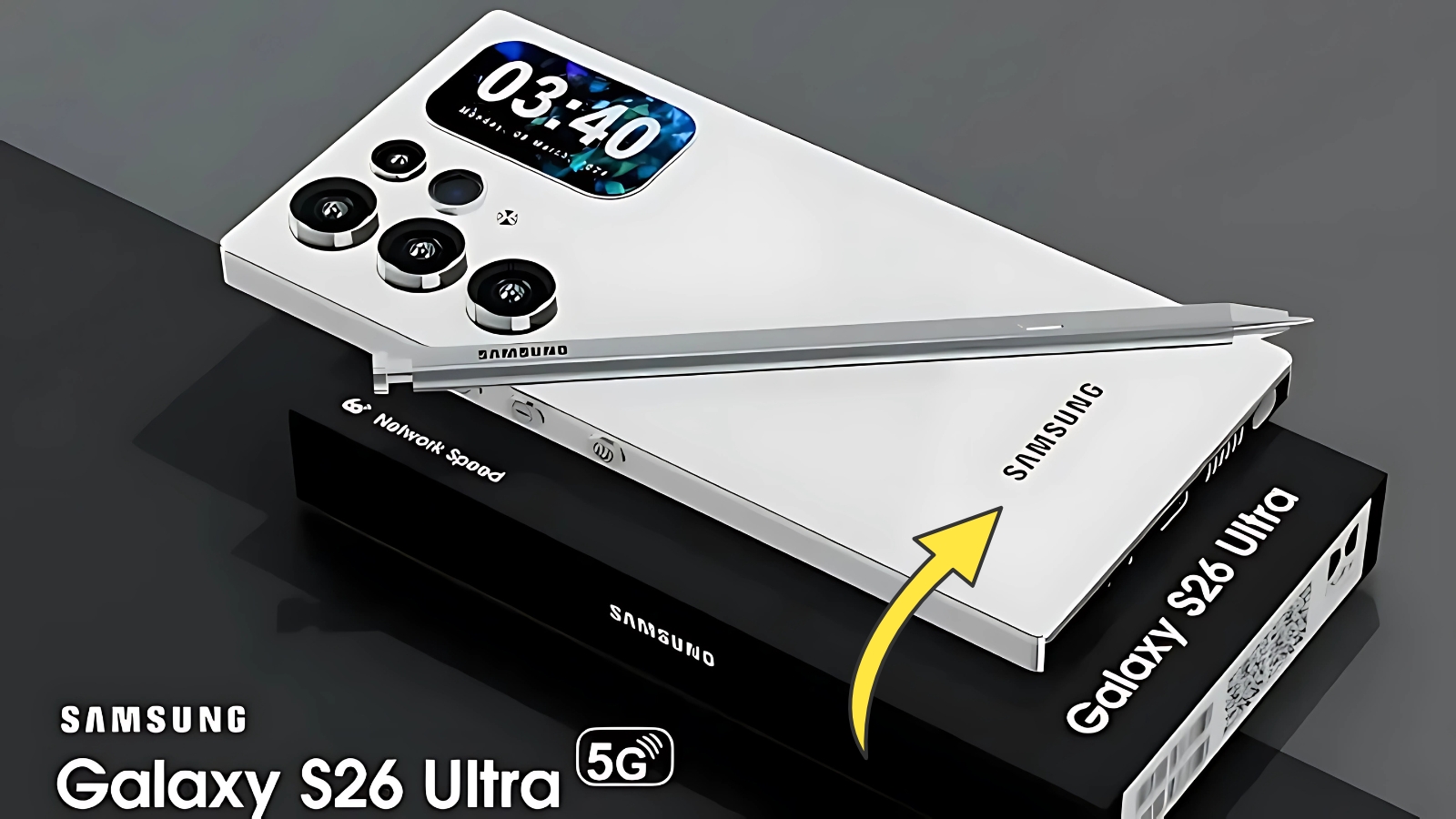Galaxy S26 Ultra: Samsung’s 2026 flagship lineup is already generating significant buzz among tech enthusiasts, with the Galaxy S26 series expected to bring substantial improvements over the current generation. The Galaxy S26 series will arrive in early 2026, assuming Samsung sticks to its usual launch schedule, likely debuting in January or February alongside what could be a fourth model variant.
A Potential Four-Phone Strategy
Samsung appears ready to shake up its traditional three-phone formula. The Galaxy S26 series will arrive in early 2026, and next year, it could launch four different models together instead of three. That fourth model might be the Galaxy S26 Edge, depending on how well the current S25 Edge performs in the market. This expansion could give consumers more choice across different price points and form factors.
Industry analysts suggest this move reflects Samsung’s strategy to compete more aggressively with Chinese manufacturers who have been gaining market share with diverse flagship offerings. The potential lineup would include the standard Galaxy S26, S26+, S26 Ultra, and possibly the S26 Edge, each targeting different user preferences.
Performance Powerhouse Under the Hood
Next-Generation Processing Power
The Galaxy S26 series is expected to feature cutting-edge chipset technology. Another report suggests Samsung is working with Qualcomm to develop its own version of the upcoming Snapdragon 8 Elite 2 flagship, likely with the ‘for Galaxy’ tag once again. This collaboration could result in more than simple overclocking, with Samsung’s version could shift to a more advanced 2nm process, which may yield more significant performance gains.
However, Samsung may also return to using its own Exynos processors in certain regions. One source suggests Samsung will “definitely” return to prioritising the use of its own Exynos processors in the S26 series. Specifically, it looks like that’ll be Exynos 2600. This regional split strategy has been used before, with North American markets typically receiving Snapdragon variants.

Camera Innovation and Refinements
The camera system appears to be taking a more measured approach to upgrades. Regarding the Samsung Galaxy S26 Ultra’s primary camera, GalaxyClub claimed that it will have a 200MP resolution, like the S25 Ultra, but it’s unclear whether the camera will use a new sensor. However, significant improvements are expected in the telephoto department.
The Galaxy S26 Ultra may feature a cutting-edge 200Mp periscope telephoto camera, up from 50Mp on the S25 Ultra, which would represent a substantial upgrade for zoom photography enthusiasts. This change would align Samsung with Chinese manufacturers who have been pushing high-resolution telephoto sensors.
Design Evolution and Build Quality
Slimmer Profile, Familiar Aesthetics
Samsung’s design philosophy for 2026 appears focused on refinement rather than revolution. According to rumors, Samsung will continue the thinning streak with the Galaxy S26 design. Samsung will achieve this using slimmer camera modules, following the successful approach used in the Galaxy S25 Edge.
The overall design language will likely remain consistent with Samsung’s current aesthetic. However, the overall design is unlikely to change to ensure the Galaxy brand retains its identity. That means a front side dominated by the display, aluminum frames on the base/Plus models and titanium ones on the Galaxy S26 Ultra and S26 Edge.
Display and Battery Improvements
Enhanced Visual Experience
The display technology is expected to see meaningful upgrades. We expect the S26 to have a 6.1-inch AMOLED screen, and the S26+ a larger 6.7-inch one. Like the Galaxy S25, you can look forward to bright colors, great clarity, and wide viewing angles. Both should also have the smooth 120Hz refresh rate that’s now standard.
Advanced display technology could make screens thinner and more efficient. One significant display development could be the integration of Colour-filter-on-thin-film-encapsulation (CoE) technology into the S26 Ultra’s display. This technology has the potential to make the display thinner, brighter, and more energy-efficient.
Battery Technology Revolution
Perhaps the most exciting development involves battery technology. We’ve heard rumors that silicon-carbon batteries are planned for the Galaxy S26 series, hopefully with higher capacities. This technology, already adopted by Chinese manufacturers, could provide larger battery capacity within the same physical space.
For the Ultra model specifically, while the battery capacity remains the same, the energy density has been increased, making S26 Ultra’s 5,000 mAh battery smaller than the S25 Ultra’s. This improvement could free up internal space for other components or contribute to a thinner design.
Software and AI Integration
The Galaxy S26 series will ship with Android 16 and Samsung’s One UI 8.5, bringing new artificial intelligence features. Samsung could introduce Perplexity AI as an alternative to complement the existing Galaxy AI and Google Gemini integration.
The emphasis on AI functionality explains Samsung’s decision to include 16GB of RAM across all storage variants, ensuring smooth operation of resource-intensive AI tasks and advanced multitasking capabilities.
Pricing and Availability Expectations
Samsung appears committed to maintaining competitive pricing. For now, the only thing we can say with some certainty is that the prices will remain the same as the Galaxy S25 lineup. However, external factors could influence final pricing decisions.
The company will likely continue its traditional release schedule, with the Galaxy S26 Ultra to be unveiled in January of 2026, followed by broader availability in the following months.
Realme 11X 5G – Fast charging samrtphone comes with fabulous look
Galaxy S26 Ultra The Bottom Line
The Samsung Galaxy S26 series represents an evolution rather than a revolution, focusing on meaningful improvements in performance, memory, battery technology, and camera capabilities. While not groundbreaking, these refinements address key user demands and position Samsung competitively against both Apple and emerging Chinese manufacturers.
The potential introduction of a fourth model variant, coupled with advanced silicon-carbon battery technology and substantial RAM increases, suggests Samsung is taking a more aggressive approach to differentiation in the premium smartphone market. Whether these improvements will be enough to maintain Samsung’s flagship momentum remains to be seen, but early indications suggest a compelling upgrade for users seeking cutting-edge mobile technology.